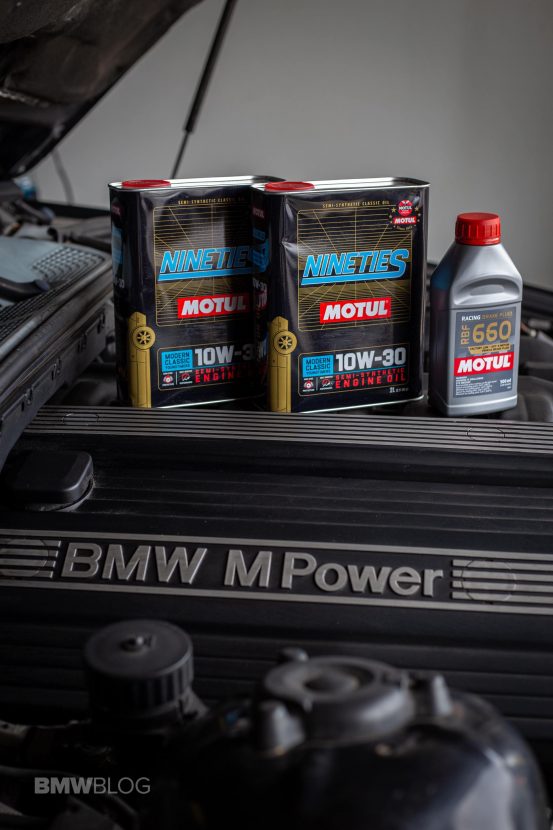Nate Risch is not only a long-time contributor of BMWBLOG, but also the proud of owner of a 1995 E36 BMW M3. Nate is also not afraid of some DIY work, so it comes as no surprise that he also enjoy changing the oil on his cars. For the latest oil change, we partnered up with MOTUL USA to try out their new Classic Line of lubricant. French manufacturer MOTULS introduced earlier this year a new line of lubricants geared towards classic and vintage cars. The new Classic Line of MOTUL lubricants builds upon the booming market of collector cars which has increased year-over-year.
The new lubricants family from MOTUL is named after different decades. For example, the Modern Classic Eighties features 10W40 lubricants to meet the needs of forced induction engines. Next we have the Modern Classic Nineties and its 10W30 oils geared towards high-revving engines with more modern valvetrains. Both Modern Classic oils are the first products to offer high ZDDP and moly for “rad” era collector cars from these two decades.
For the new 2100 Classic Oil 15W50, MOTUL revised its legendary 2100 oil to better lubricate and protect naturally aspirated and forced induction engines with flat tappet cams common to the vehicles in the 1970s and beyond. The vintage cars of the 50s are not forgotten either. The Classic Oil 20W50 is designed for hot rods, muscle cars and other vehicles of the 1950s, offering an additive package fortified with an ideal ~1,800 ppm of ZDDP.
Last but not least important is the Classic Oil SAE 30 and SAE 50 which cater to gasoline or diesel four-stroke engines built before 1950.
For the E36 M3 we used the Modern Classic Nineties with the 10W30 lubricant. Without getting into the nitty gritty details of oil changes, we decided to put out a short guide, along with a video to showcase the oil change process.
- Park your BMW in a garage or in a place where you have space to maneuver around, outside is fine as well.
- As safety precautions, if you have a BMW equipped with manual transmission, place the car in gear and engage the parking brake. If you drive an automatic car, make sure the shift lever is placed in the parking position and once again, engage the parking brake. Many mechanics recommend to use wheel chokes to block the tires.
- You need some tools before you start the oil change process. Make sure you have handy an oil pan, socket and socket wrenches, and a flat head screwdriver
- Use a 17 mm wrench to unscrew the housing cap
- Drain the oil tank in a bucket
- Remove oil filter cap and filter
- Let the filter drain before pulling it out
- Replace O Rings
- Install new oil filter and tighten cap to proper spec with 18mm wrench
- Add new lubricant










































































